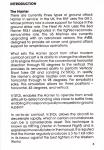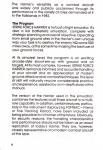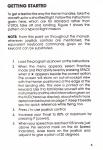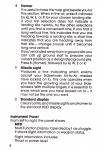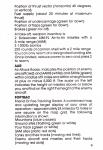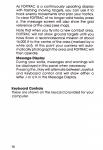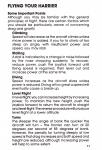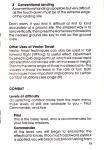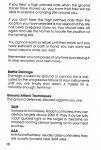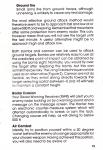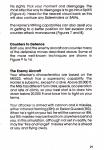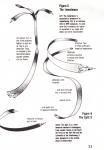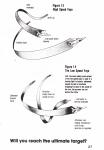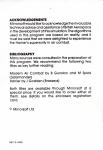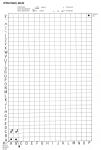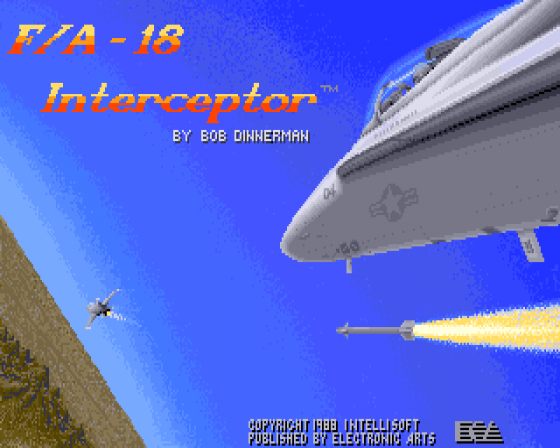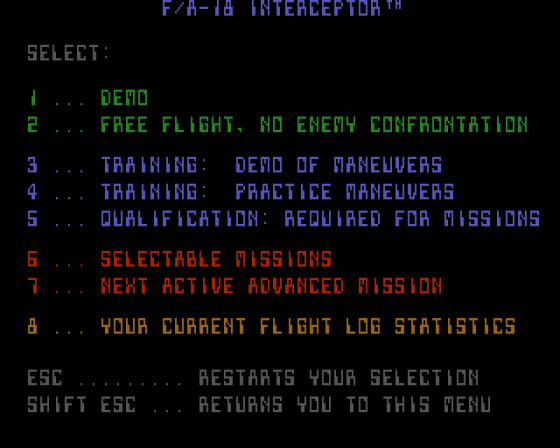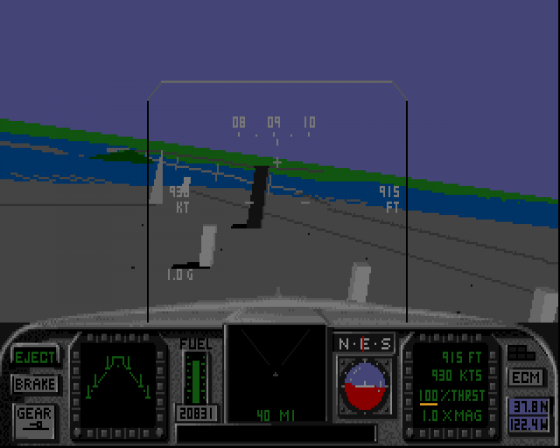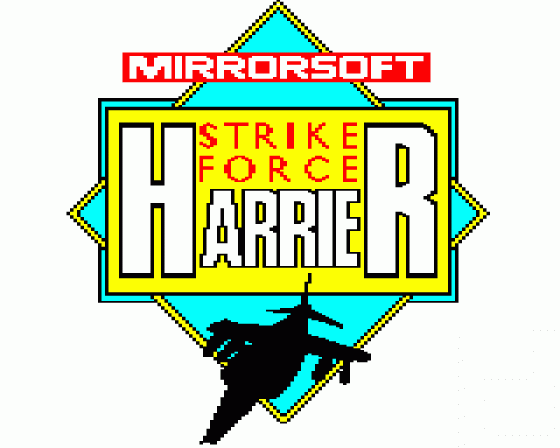
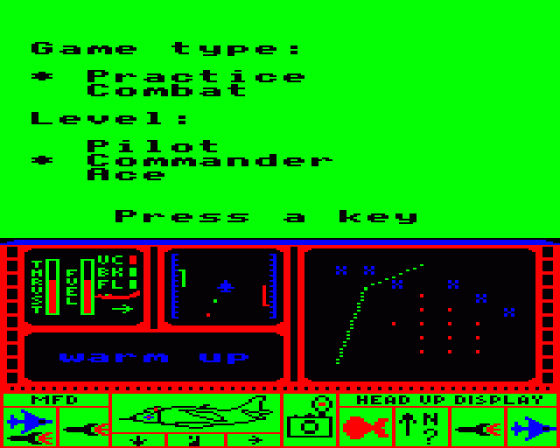
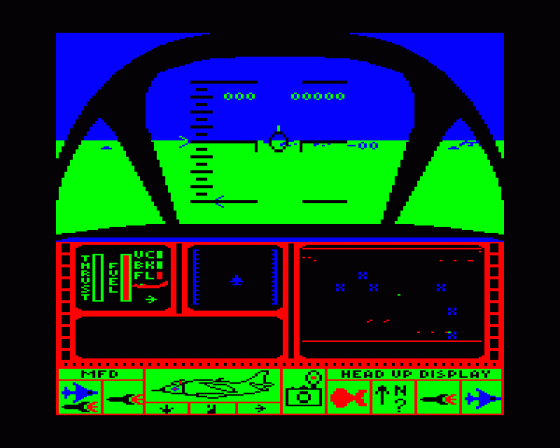
| Genre: | Game: Flight Simulator |
| Publisher: | Mirrorsoft |
| Cover Art Language: | English |
| Machine Compatibility: | BBC Model B, BBC Model B+, BBC Master 128, Acorn Electron |
| Release: | Professionally released on Cassette |
| Available For: | Acorn Electron, Amiga 500, Amstrad CPC464, Atari ST, BBC Model B, Commodore 64/128 & Spectrum 48K/128K/+2 |
| Compatible Emulators: | BeebEm (PC (Windows)) PcBBC (PC (MS-DOS)) Model B Emulator (PC (Windows)) Elkulator 1.0 (PC (Windows)) |
| Original Release Date: | 1st January 1984 |
| Original Release Price: | £7.99 |
| Market Valuation: | £2.94 (How Is This Calculated?) |
| Item Weight: | 64g |
| Box Type: | Oversize clamshell case |
| Author(s): | Rod Hyde |
Variant Items
There is 1 other item featuring this same game (that we know about!). Click any of them for their details.
Active Auctions
Closed Auctions
Buy It
Unfortunately no-one is currently selling this item.
Inner Inlay
Auction Price Watch
Worried you're being ripped off? Closing prices on eBay can help you decide what a reasonable price is for a particular item.

A&B Computing
1st January 1986
The best game I have come across since Elite and has to be a must for most people's collections. Read Review

Acorn User
1st January 1986
Beware, this is a joystick-only game... Flying and manoeuvring are difficult and you are penalised for each mistake you make. Read Review

Electron User
1st January 1986
The ground and air combat makes this one of the best games of its type on the Electron. Read Review
Full Instructions
The Harrier
There are currently three types of ground attack Harrier in service. In the UK, the RAF uses the GR.3, whose primary role is close support for troops in the ground strike role. The Fleet Air Arm uses the Sea Harrier FRS. 1 designated in the fighter/reconnaissance/ strike role. The US Marines are currently upgrading with an advanced version, the AV8B, designed to provide air cover and ground attack support for amphibious operations.
What sets the Harrier apart from other modern combat aircraft is its ability to change the direction of its engine thrust from the conventional horizontal direction through 90 degrees to the vertical. This provides its renowned ability to perform Vertical/ Short Take Off and Landing (V/STOL). In reality, the Harrier's engine nozzles can be varied from horizontal through to 98 degrees. For simplicity's sake, this simulation allows for three positions - horizontal, 45 degrees, and vertical.
V/STOL enables the Harrier to operate from small, difficult to detect landing sites close to battle lines, enabling it to respond quickly to requests for ground support.
In air-to-air combat, V/STOL allows the aircraft to decelerate rapidly, which in certain circumstances can be a considerable asset. This technique is known as ViFFing (Vector in Forward Flight) and is explained more fully later in the manual. It is reputed that the Harrier regularly produces a 3-to 1 kill ratio in its favour against the best fighters in the Western World.
The Harrier's versatility as a combat aircraft was widely and publicly acclaimed through its performance in the variety of roles demanded of it in the Falklands in 1982.
The Program
Strike Force Harrier is not just a flight simulator. It's also a full battlefield simulation, complete with strategic planning and overall objective. Operating from small ground sites in the Harrier's own unique way, your task is to destroy the enemy HQ some 500 miles away, at the same time making the best use of your ground forces.
At its simplest level, the program is an exciting arcade style shoot-em-up with ground and air targets. At its most complex, however, Strike Force Harrier demands informed and accurate handling of your aircraft and an appreciation of modern ground attack and air combat techniques. This level of skill will naturally require considerable practice and experience, assisted by an in-depth study of this manual.
The version of the Harrier used in this simulation combines the features of all three aircraft in a multirole capability. In addition, certain features, particularly in the instrument display (eg FOFTRAC- Friend or Foe Tracking Radar), have been included as being plausible for a Harrier of the future. Obviously, for security reasons, the handling characteristics and performance should not be taken as an exact replication of today's Harrier. They are, however, closely representative of a modern combat aircraft of this type.
Getting Started
To get a feel for the way the Harrier handles, take the aircraft up for a short test flight. Follow the instructions given here, which are for standard rather than V/STOL take off and landing Figure 1 shows the pattern of a typical flight mission.
NOTE: From this point on throughout the manual, wherever joystick controls are mentioned, the equivalent keyboard commands given on the keycard can be substituted.
- Load the program as shown on the instructions.
- When the menu appears, select Practice mode and Pilot ability level by pressing SPACE when a * appears beside the correct option. The screen will show an out-of-cockpit view with the Harrier positioned at the edge of the first landing site. This view is printed on the keycard. Use it to familiarise yourself with the instruments and the vital information given on the HUD(head up display), about which more detail can be found on page 7. Keep it beside you for quick reference while flying, too.
- Press J to use joystick control.
- Increase your thrust to 80% of maximum by pressing P (power).
- When your speed has reached 125 knots (just above the second mark on the Air Speed Indicator), ease back on the joystick and adjust it to give a pitch of 20 degrees.
- Raise the undercarriage by pressing U. If you don't, the Harrier will vibrate and a “TOO FAST' message will appear. This vibration will also occur if there is too much power for a given situation, so in this situation reduce power by pressing O (power -) until the appropriate level is achieved.
- Fly straight and level, with the pitch at around 0 degrees. The slight oscillation of the horizon gives the impression of movement and perspective.
- If you explore your immediate area you will see your course pattern appear on FOFTRAC. If you want to pause for any reason, press A (Arrest Action). Note the ground details of the smail hillocks, mountains, enemy targets, and SAM (Surface to-Air Missile) sites. If you fly above 10,000 feet, you will break through the cloud cover. in practice mode, you can fortunately ignore aircraft attacks, or attack with impunity. If you leave the operational area, you will receive a "FOFTRAC WEAK' signal. To get back, fly on a heading of 045 degrees.
- To land, you will first have to locate a suitable ground site. Press 8 (Homer), followed by QW E or R(the codes for the preprepared landing sites). Alter direction so that the line on the HUD is long and vertical – this gives you the heading to take. More detail on locating ground sites and landing can be found on pages 14–15 and 17.
A Detailed Guide To Your Instruments
Refer to the keycard supplied for your computer when reading this section.
HUD (Head Up Display)
Overlaid on the view from the cockpit is the HUD, which provides vital in-flight information. From left to right, the displays are:
VIS
Vertical Speed Indicator. Shows whether you are gaining or losing height.
ASI
Air Speed Indicator. Shows speed through the air. The scale is graded in steps of 50 knots, with a longer gradation for every 100 knot step.
Gyro
Shows the direction in which you are travelling.
Sight
Acts both as a gunsight and as a roll indicator, showing the position of the Harrier's wings and tail relative to the horizon.
Height
Height in feet above ground level.
Pitch
Indicates pitch, or attitude, above or below the horizontal.
The HUD can also display additional information when the appropriate key is pressed:
Bomb sight
Shows the direction and projected point of impact(indicated by a small horizontal line) if a bomb is released. Note that the impact position cannot be computed if the line is at 12 o'clock
Homer
It is useful to have the map grid beside you for this section. When in the air, press 8 followed by Q, W, E, or R for your chosen landing site. If your first selection does not indicate a landing site nearby, try the other selections until you find a convenient one. If you find a long vertical line, this indicates that you are heading towards a landing site; a short line indicates that you are heading away from that site - change course until it becomes long and vertical.
If you've landed away from a ground site you can call up ground staff to prepare your current position as a designated ground site. Press 8 (Homer), followed by Q W, E or R.
Missile sight
Produces a line indicating which enemy aircraft your Sidewinder Air-to-Air missiles have locked on to. This only operates when you hear the growling sound of your side winders. With multiple targets, it is essential to know which one you have locked on to - it may not be the one you want.
Standard display
Clears bomb and missile sights and Homer to the standard HUD display.
Instrument Panel
From left to right, the panel shows:
MFD
Multi Function Display. Operated by 1 as a toggle, it shows flight information or weapon status.
Flight information includes:
Thrust or power level
Position of thrust vector (horizontal, 45 degrees, or vertical)
Fuel supply (about 20 minutes at maximum thrust)
Position of undercarriage (green for down)
Position of flaps (green for down)
Brakes (green for off)
At take off, weapon inventory is: 2 Sidewinder AIM-9L Air-to-Air missiles with a 5-mile range (AAM) 3 1,000lb bombs 250 rounds of cannon shell with a 2 mile range You can only rearm at a designated landing site. Once landed, reduce power to zero and press 2 to rearm.
AAR Air Attack Radar. Indicates the position of enemy aircraft (red) and AAMS (white) and SAMS(green) within a radius of 5 miles and within a height band of plus or minus 5,000 ft. The scale on the left indicates the height of missiles above or below you, and that on the right the height of the enemy aircraft.
FOFTRAC Friend Or Foe Tracking Radar. A combined map and updating target display of your area of operation-approximately 24 miles by 12 miles or one square on the map grid. The following information is shown:
Mountains (blue crosses) Ground sites (flashing green or white) Your track (green or white) SAM sites (static red dots) Tanks and their tracks (moving red lines) Enemy aircraft and missiles and their tracks (moving red dots)
As FOFTRAC is a continuously updating display with flashing moving targets, you can use it to track enemy movements and plan your tactics. To clear FOFTRAC of no longer valid tracks, press 6. The message screen will also show the grid reference of the area (see map).
Note that when you fly into a new combat area, FOFTRAC will not show ground targets until you have flown a reconnaissance mission at about 16,000 ft to the centre of the area (marked by a white dot). At this point your camera will auto matically photograph the area and FOFTRAC will then operate.
Message Display
During your sortie, messages and warnings will be displayed in this panel when necessary. Pressing the J Key will alternate between Joystick and Keyboard control and will show either a letter Jor a k in the Message Display.
Keyboard Controls
These are shown on the keycard provided for your computer.
Flying Your Harrier
Some Important Points Although you may be familiar with the general principles of flight, there are certain factors which you should be particularly aware of concerning drag and gravity.
-
Climbing
Speed will decrease as the aircraft climbs unless more power is added. If you try to climb at too steep an angle, with insufficient power and speed, you may stall. -
Stalling
A stall is indicated by a change in noise followed by the nose dropping suddenly. To recover, reduce power, push the joystick forward until flying speed is regained, then level out and increase power at the same time. -
Diving
Speed increases as the aircraft dives unless power is reduced. Diving at too great a speed will eventually cause a break-up. -
Level Flight
In level flight, you can increase height by increasing power. To maintain the new height, push the joystick forward to return the aircraft to straight and level flight. The reverse procedure will produce level flight at a lower altitude. -
Turns
The steeper the angle of bank the quicker the aircraft will turn – the Harrier can turn at 20 degrees per second at 85 degrees of bank However, the penalty for turning steeply at low speed is that drag increases and both speed and height are reduced, although increasing power will help to some extent.
These points should be remembered in air-to air combat, as you will need to evaluate what you can afford to sacrifice in terms of height and speed when planning certain manoeuvres.
Taking Off
The designated landing sites in this simulation are shown as prepared areas with beacons at the four corners. Each site is just long enough for a conventional take off or landing, but it is advisable to use V/ STOL techniques.
Before take off make sure the flaps are up (red).
Conventional take-off
- Power up to 80%
- At 125 knots, lift off by easing back on the joystick
- Raise the undercarriage and reduce power gradually until the appropriate operational conditions are achieved.
Short take-off
- Power up to 80%
- Press 4 to select 45 degrees thrust.
- At 100 knots, lift off by easing back on the joystick
- Raise the undercarriage and reduce power as necessary
- Fly at a pitch of less than 10 degrees
- At 150 knots press 5 to select horizontal thrust
Vertical take off
- Press 3 to select vertical thrust.
- Power up to 100%
- After lift-off, raise the undercarriage, and reduce power slightly
- At 700 ft lower the nose slightly to increase forward speed
- Press 4 to select 45 degree thrust and ease back to zero pitch
- At 150 knots press 5 to select horizontal thrust
Hovering
After a vertical take off and while vertical thrust is selected, adjust the power until the VSI reads zero and height is steady- this requires about 80% thrust. Moving the joystick forward to pitch the nose down will cause you to move forward, and moving the joystick back will have the reverse effect. The skill in hovering is achieving a balance between these two movements so that there is little or no forward or backward movement.
The Harrier's heading can be changed while hovering by using the rudder keys shown on the keycard. This is probably the only time you will ever need to use rudder.
Landing
The procedure for using the Homer key to locate ground sites has already been explained(see page 8). As you approach the site, you will see some of the beacons, and when you reach its centre, you will hear a high pitched note indicating that the optimum landing position has been reached. Any small hillocks in the landing site area can be ignored - they are only camouflage.
Vertical landing
- Approach your proposed landing area at 500 ft and 400 knots. Each step on the AS.I. represents 50 knots.
- Select the 45 degree thrust vector and use the joystick to maintain a level flight. Wait until your speed falls to 200 knots.
- Lower the undercarriage and flaps (F). Maintain a level flight and wait until your speed falls to 120–100 knots. Do not allow your speed to fall below 100 knots.
- Push the joystick forwards to lose height. At 200 pull back on the stick to level the plane.
- Select the 90 degree thrust vector and you will now be hovering above the ground.
- Reduce power carefully to achieve a slow, steady descent.
Short landing
- Approach your proposed landing area at 500 ft and 400 knots.
- Select the 45 degree thrust vector and use the joystick to maintain a level flight. Wait until your speed falls to 200 knots.
- Lower the undercarriage (U) and flaps (F).
- Wait until your speed falls to 120–100 knots. Keep the pitch between 0 and -6 degrees and make sure your speed does not fall below 100 knots.
- Adjust power and pitch to keep the rate of descent under 10 feet per second (one mark on the VSI).
- On landing, take off all power and apply the brakes (B).
- Press 2 for refuelling, rearming, and any necessary battle damage repairs.
Conventional Landing
A conventional landing is possible but very difficult as the touch-down must be at the extreme edge of the landing site.
Don't worry if you find it difficult at first to land accurately at a ground site. The simplest way is to land vertically, then press the Homer keyfollowed by the nearest ground site key to call up the ground crew.
Other Uses of Vector Thrust
Vector thrust techniques can also be used in fast forward flight (VEFing) to useful effect. Experiment by selecting 45 degree thrust, which will cause rapid deceleration combined with an increase in height. Then try the same angle of thrust in a steep bank-this causes a sharp increase in the rate of turn. Both techniques have important implications for certain combat situations (see page 20).
Combat
Levels of difficulty
On selecting combat mode from the main menu, three levels of skill are available to you - pilot, Commander, and Ace.
Pilot
This is the basic level, and is recommended for your first few missions.
Commander
At this level, you will begin to encounter the effects of G forces. If too much backward joystick is applied, you will black out(blood rushing from your head) when you reach 9G positive. If too much forward joystick is applied, then red out (blood rushing to your head) will occur at 3G negative. Carefully apply the opposite joystick movement to correct the situation. More careful fuel management is also required at this level as the rate of consumption is higher.
Ace
In addition to the factors encountered as a Commander, this level requires greater accuracy in aiming and firing cannon, and the cannon's effective range is reduced.
 |
Your Mission
Your mission is to destroy the enemy HQ 500 miles NNE of your starting position as shown both on FOFTRAC and on the grid map.
To reach enemy HQ, you will need first to destroy the enemy tanks threatening your ground sites. When you've done this, your next move is to set up a new ground site in an adjacent operational area. Unfortunately, these will also come under threat from enemy tanks which will in turn have to be destroyed - and so the process goes on. There are a total of 512 operational areas at your disposal, but obviously not all need to be taken to reach your goal.
It is suggested you take a copy of the map grid and use it to keep a record of your progress as a hardcopy reference.
Identifying Ground Sites
When you fly into a new area, begin by making a reconnaissance flight to photograph it so that FOFTRAC is available to you. This will enable you to select an area which is relatively clear of enemy ground forces.
Setting Up Ground Sites
Unprepared ground requires a vertical landing with zero horizontal speed. When you've landed, use the Homer to select which of your landing sites (Q, W, E or R) you wish to move up. Your ground forces will be automatically moved up by an airborne drop at a speed of around 600 knots.
If you hear a high pitched note when the ground forces have moved up, you know that they will be able to prepare a landing site around you.
If you don't hear the high pitched note then the location you have selected is not ideal and the site has been prepared close by. You should take off again and use the Homer to locate the position of the landing site.
You cannot rearm or refuel until they arrive, so if you have sufficient of both in hand, you can carry out local missions while you wait.
Remember you can pause at any time by pressing A to stop and plan your next move.
Battle Damage
Damage caused by ground or cannon fire is indicated by the progressive failure of your instruments until you are finally shot down. A missile hit is, naturally enough, terminal.
Ground Attack Techniques
The ground defences stacked against you are:
SAM
Surface to Air Missiles. Radar controlled, they can destroy targets above 2000 ft. They may be fully radar guided right to the target or become an infrared homing device locking on to your heat sources.
AAA
Anti-Aircraft Artillery. Usually radar-controlled, they are usually located near SAM sites.
Ground Fire
Small arms fire from ground troops, although unnerving, is unlikely to cause any real damage.
The most effective ground attack method would therefore seem to be to approach fast and low at or below 500 fand weaving Remember that mountains offer some protection from enemy radar. This can, however mean that you will not see the target until the last minute. A useful alternative might be to approach high and attack low.
Both bombs and cannon can be used to attack ground targets. Bombs are relatively easy to use as the predicted point of impact can be obtained by using the bomb sight. Normally, you would fly over the target after releasing the bomb, but this can sometimes be risky. The Long Toss technique can be used as an alternative (Figure 2). Cannon are not as flexible, as they entail diving directly towards the target, selecting a pitch between-5 and +5 will help to maintain a constant height.
Radar Evasion
Your Radar Warning Receiver (RWR) will alert you to enemy radar locking on by a warning sound and a message on the message screen. The Harrier has an electronic counter-measure system which will attempt automatically to break or jam the lock Changing course will help, as will diving to below 500 ft.
Air Combat
Ideally, try to position yourself within a 30 degree 'cone' behind the enemy at a range appropriate for your chosen weapon. Having achieved this position, you will also need to be aware of:
- The characteristics of your own and the enemy's aircraft.
- The side effects of certain manoeuvres- your ability to turn tightly is a function of your speed. Too tight a turn at too low a speed will reduce both height and speed, but at a higher speed, the rate of turn will be slower. Your optimum turning speed should be around 450 knots.
Attack
Once within the 30 degree cone, ensure that you also have both a height and speed advantage. This will enable you to zoom away, gaining height, as soon as you have discharged your weapons. Missiles can be used at a relatively fast closing speed, but cannon attack requires a slower approach in order to track the target accurately. But remember that the enemy will of course try to force you to overshoot, reversing the situation in an instant.
Defence
The classic response to an attack from the rear is to turn towards the enemyin a defensive break (Figure 3). Other moves include the Scissors and the Immelman (Figures 4 and 5).
Your attacker can also be forced to overshoot you if you can change direction quicker than he can or by increasing the relative closing speed by deceleration and/or manoeuvering
If you have real problems shaking off the enemy, you can as a last resort try 'jinking - altering course repeatedly so that he cannot keep you constantly in his sights. Pick your moment and disengage. The most effective way to disengage is to go into a Splits (Figure 6). Head for the nearest cloud bank as this will also confuse any Sidewinders or SAMs.
The Harrier's VIFFing capabilities can also assist you in getting to a better position for fast evasion and counter-attack manoeuvres (Figures 7 and 8).
Counters To Defence
Both you and the enemy aircraft can counter many of the defensive moves described above. Some of the more well-known techniques are shown in Figure 9 to 14.
The Enemy Aircraft
Your attacker's characteristics are based on the MIG23, which has a supersonic capability. The Harrier is subsonic, except in a dive. Above 20,000 ft, the MIG has different turn rates, speeds, acceleration and rate of climb, so your best shot is to draw him down below 20,000 ft and force him to fight on your terms.
Your attacker is armed with cannon and 4 missiles, either Infrared Homing (IRH) or Radar Guided (RG). When he's right on your tail, he will fire cannon or RH, but RG missiles may be fired from anywhere behind you. In this simulation, although not yet in reality, he may fire "Fire and Forget' missiles when he is ahead of you and flying away.
 |
 |
 |
 |
Defending Yourself Against SAM and AAM Attack
You will have very little time to react, so here are some brief pointers:
- When the radar lock warning sounds and appears on the message screen, try to break the lock by a drastic alteration of direction greater than 90 degrees.
- If you cannot immediately break the lock, try to ascertain the type of missile and monitor its position on AAR and/or FOFTRAC.
- If you have time, turn towards the missile and start weaving. At the last possible moment, make a drastic change in heading
- An additional option at the last possible moment is to use your flares (for IRH) or chaff packs (for RG) to divert the missiles. You are equipped with 9 dispensers of each.
If the missile alert goes off, your evasion has been successful and you are free to continue your mission.
 |
 |
Acknowledgements
Mirrorsoft would like to acknowledge the invaluable technical advice and assistance of British Aerospace in the development of this simulation. The algorithms used in this program are based on reality, and it must be said that we were delighted to experience the Harrier's superiority in air combat.
Bibliography
Many sources were consulted in the preparation of this program. We recommend the following two titles as key further reading:
Modern Air Combat by B Gunston and M Spick (Salamander) Harrier by J Godden (Brasseys)
Both titles are available through Mirrorsoft at a special price. If you would like to order either of them, see details on the enclosed registration card.
Miscellaneous
This game was mentioned in the following articles:
Screen Designers
The following utilities are also available to allow you to edit the supplied screens of this game:
Cheats
Download
A digital version of this item can be downloaded right here at Everygamegoing (All our downloads are in .zip format).
| Download | What It Contains |
|---|---|
| A digital version of Strike Force Harrier suitable for BeebEm (PC (Windows)), PcBBC (PC (MS-DOS)), Model B Emulator (PC (Windows)), Elkulator 1.0 (PC (Windows)) | |
| A digital version of Strike Force Harrier suitable for BeebEm (PC (Windows)), PcBBC (PC (MS-DOS)), Model B Emulator (PC (Windows)), Elkulator 1.0 (PC (Windows)) |
Games Like Strike Force Harrier
Report A Problem
We thank you from the bottom of our hearts if you report something wrong on our site. It's the only way we can fix any problems!
You are not currently logged in so your report will be anonymous.
Add Note
Release Country
Change the country to update it. Click outside of this pop-up to cancel.
Scan Of Selected Article
If you auction an item, it will no longer show in the regular shop section of the site.







